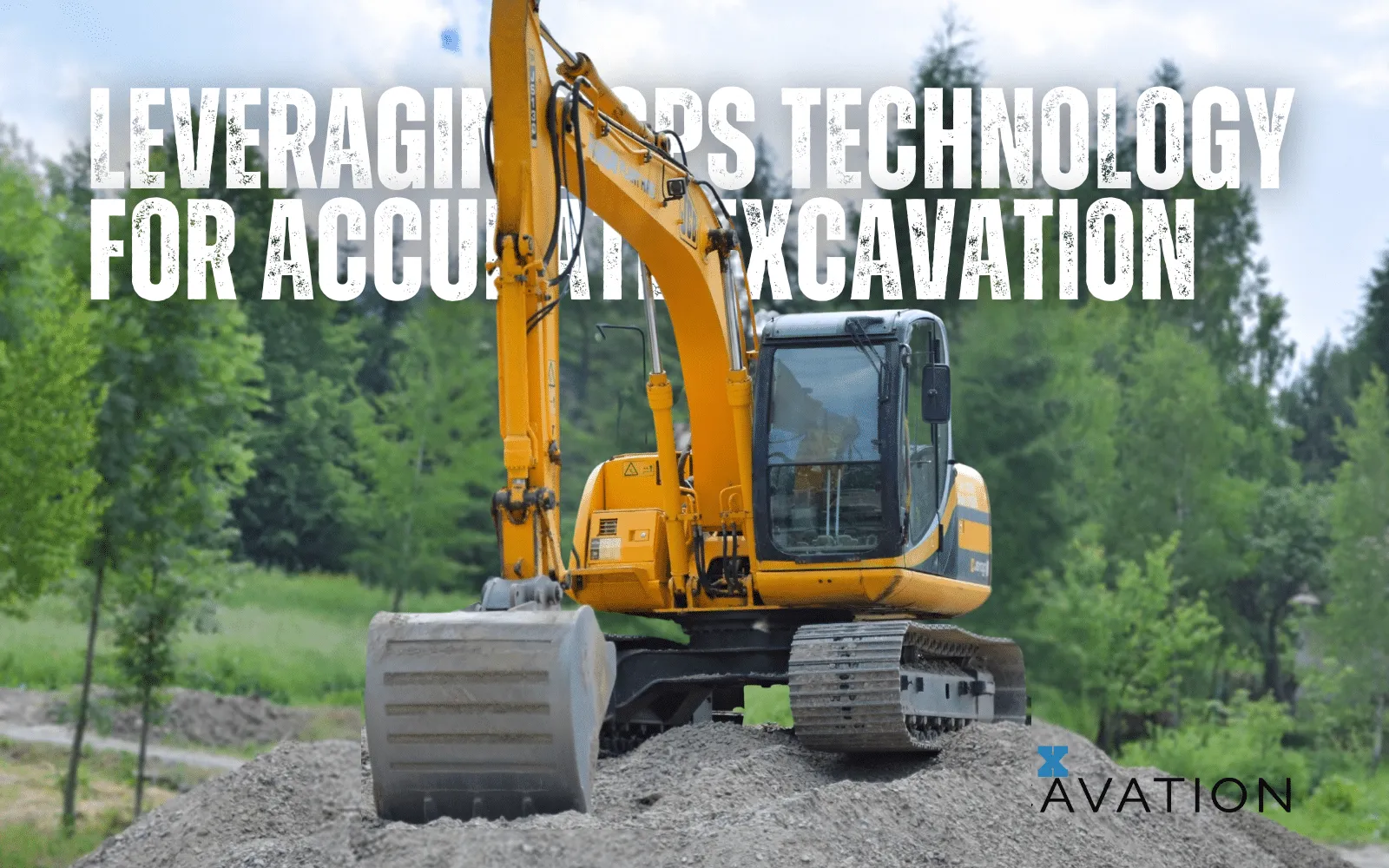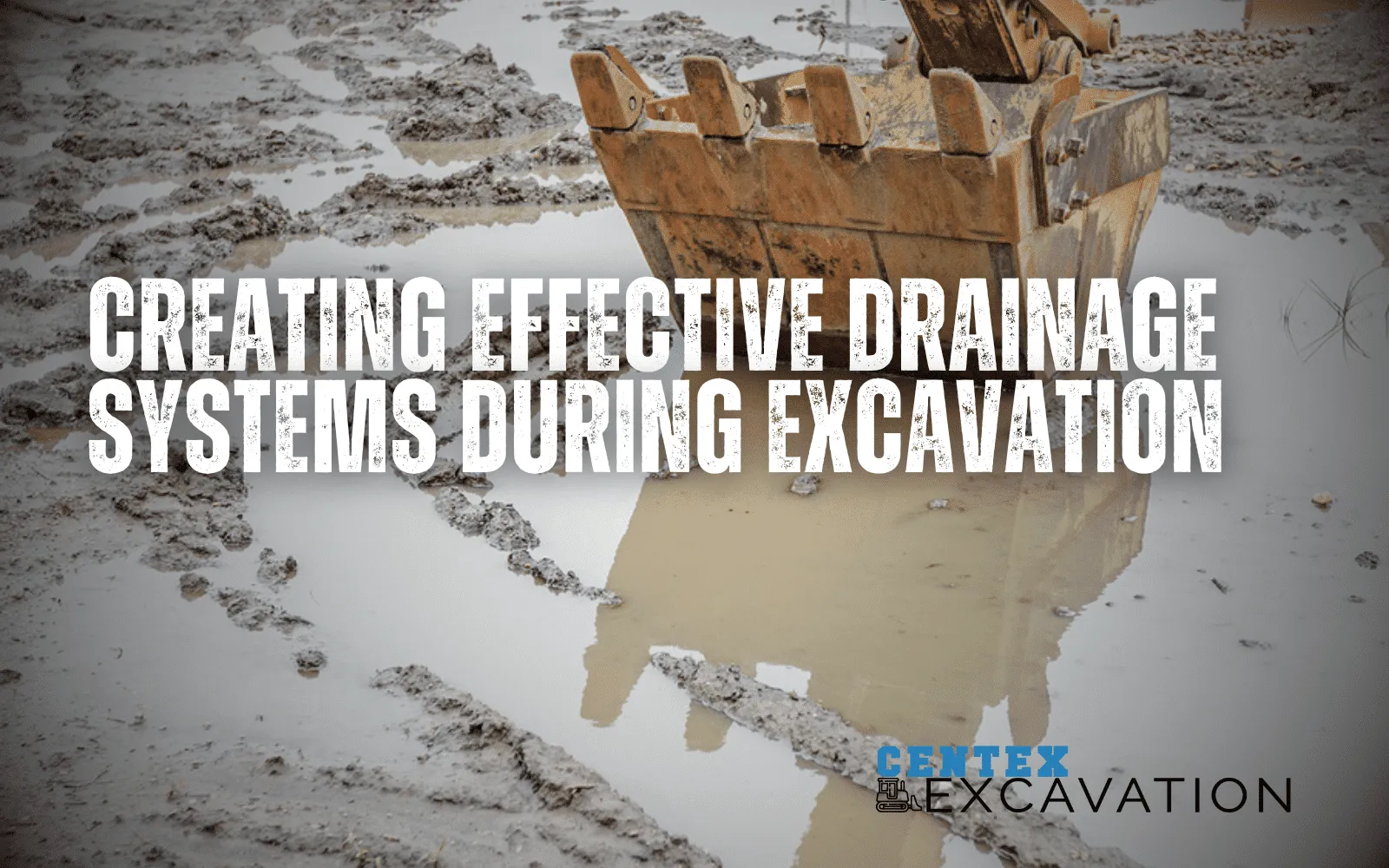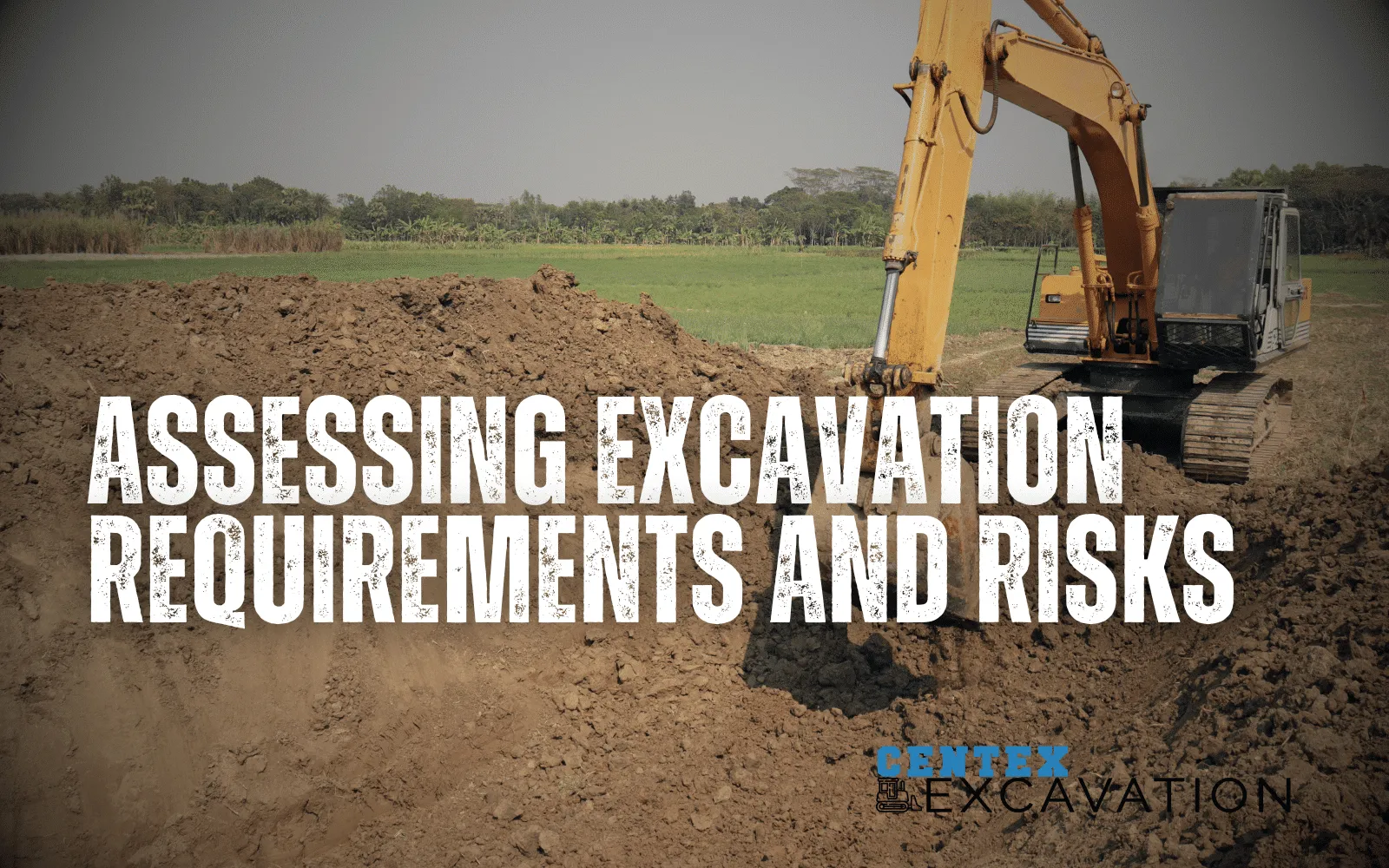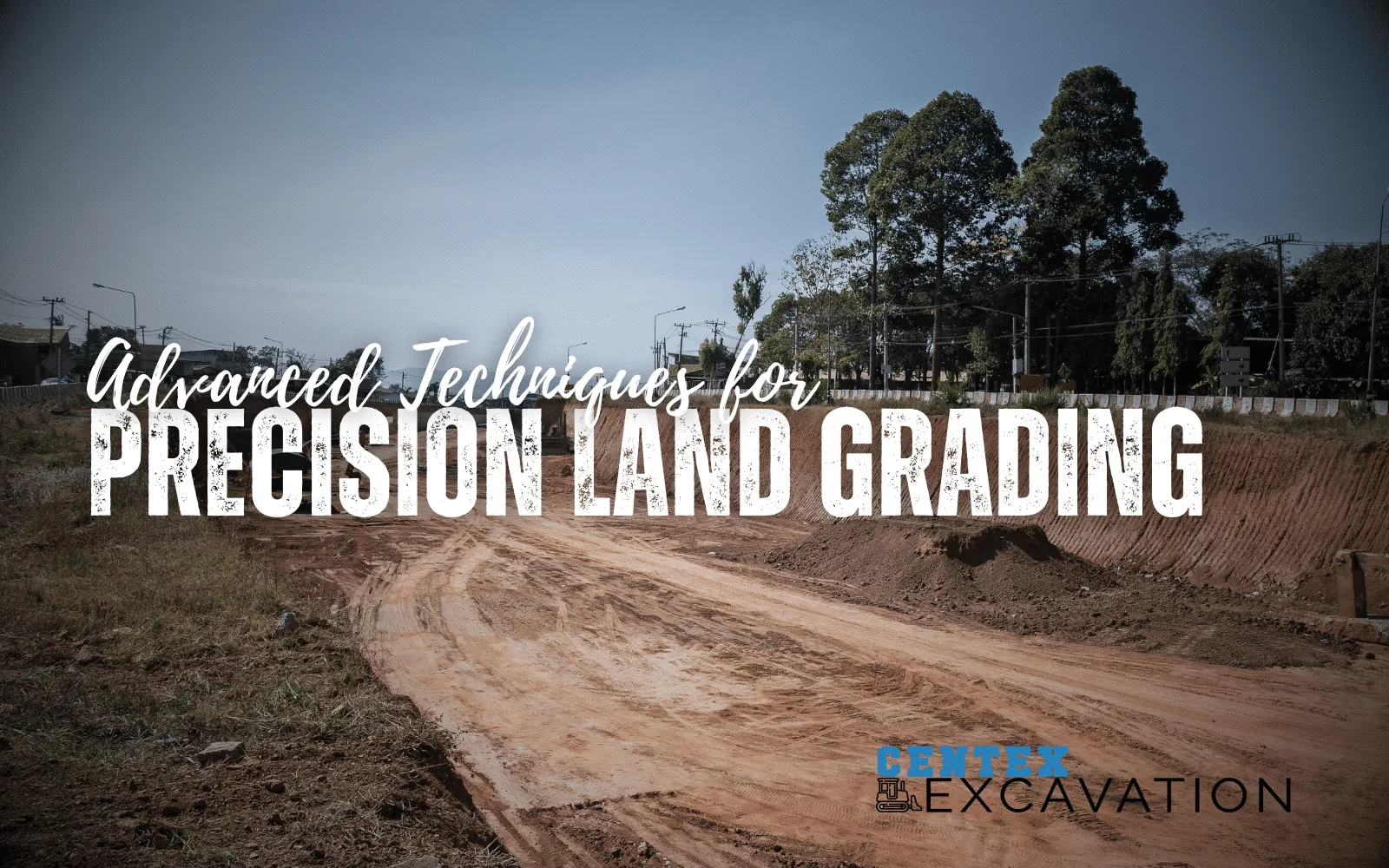Everything You Need to Know About Grading and Site Preparation
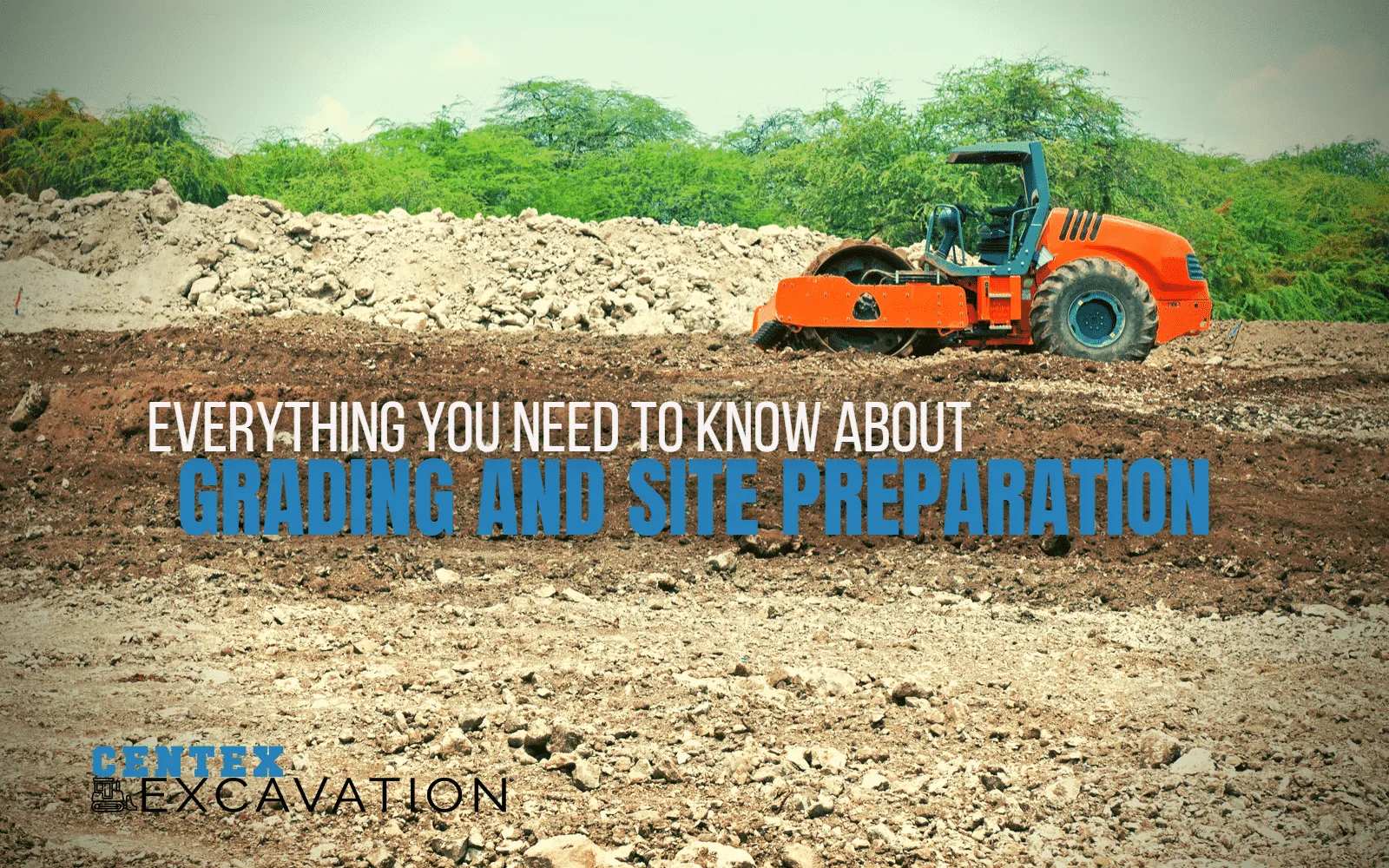
Whether you're into building construction or even landscaping, usually you must do some site grading and site prep. Fortunately, our site preparation experts explore the essential steps to successful grading and site preparation.
From understanding soil composition and using the right grade for a project to creating a long-term maintenance plan, you will learn about the many tasks involved in this important process.
It's worth noting, however, that each team has their own construction process. This just happens to be the site prep steps we have in place for our team. These steps can also vary from project to project as well, so keep that in mind. For example, a landscaping project will vary from a major building construction project.
You'll have peace of mind knowing you have everything you need to get the job done right.
What is grading?
Let's start with the basics.
Grading in construction is the process of preparing a site for construction by leveling and sloping the land. Bulldozers or other heavy machinery typically complete this process.
The ultimate objective of site preparation and grading is to create a foundation for the eventual construction of homes or businesses. Grading is the first step in the process of site preparation and grading and is essential for the successful and safe completion of a project.
The purpose of grading is to create a flat, stable building surface that is level and free from obstructions, such as rocks and trees. This process may vary depending on the size, shape, and type of the site, as well as the type of grading projects being conducted.
Proper site preparation is essential for the successful and safe completion of a project, as it lays the groundwork for a solid foundation that will last for decades. It also helps to ensure safety, prevent damage, and guarantee stability.
The finished grade is the final shape of the land after the grading process is complete.
What is site preparation?
Site preparation is an essential component of any construction project, as it involves activities such as surveying, grading, leveling, land clearing, drainage, earthmoving, and demolition. These steps are necessary to ensure the successful completion of the project.
Site preparation activities can include surveying the site to create an accurate plan, clearing the land of debris and vegetation, and grading the area to ensure proper drainage. Other tasks may include installing erosion and drainage control systems and compacting the soil to provide a stable foundation for the construction.
The purpose of site preparation is to create a safe and secure environment for the construction project. It also ensures that the site is suitable for the construction activities, and that the necessary materials are available and accessible. Site preparation also helps minimize the risk of accidents and other issues during the construction process. Proper site preparation is essential for the successful completion of the project, as it helps to ensure that the site conditions are optimal for the construction activities.
By understanding the activities involved in site preparation, you can ensure that your project is completed successfully and on time. Site preparation is a critical part of the construction process and should be taken seriously.
Proper planning and implementation of site preparation activities can help minimize the potential risks associated with any construction project.
The Grading and Site Preparation Process
Site preparation and grading involve a series of steps to clear, level, and stabilize land for a construction project. This includes removing trees, vegetation, and debris, assessing the composition of soil and groundwater, and submitting a grading plan for approval. Successful site preparation is critical for ensuring a smooth and successful construction process. Careful evaluation and necessary steps can guarantee the achievement of the desired aesthetic and a level base before commencing construction.
Step 1: Evaluate the site.
The first step in the grading and site preparation process is to evaluate the building site in order to ascertain its suitability for a particular project. This includes assessing factors such as the location and conditions of the site, underground utilities, soil composition, environmental conditions, and the presence of any potential impediments. It is also necessary to consider the United States Department of Agriculture's soil classification system when assessing the suitability of a subsurface medium for a project. Also, it is recommended to conduct soil tests both before and after demolition to ensure the accuracy of the results.
The assessment stage is also essential for formulating a detailed grading plan. This plan should take into account factors such as elevations, drainage, and the original grading plan. The survey results provide an indication of where certain structures can be constructed for optimal results. Additionally, thorough surveying of the site is essential for successful completion of zoning and permitting processes. This involves establishing boundaries, positioning buildings and structures, and connecting utilities.
Therefore, it is important to evaluate the site thoroughly before beginning any grading and site preparation work. By assessing the building site and taking the necessary steps to properly prepare the area, it is possible to ensure the successful completion of the project. Also, ensure you adhere to the policies of the local planning and zoning jurisdictions to receive approval for the project. Having a thorough understanding of the site and its environmental conditions is essential for successful site development.
Step 2: Survey the site.
Surveying the site is the second step in the grading and site preparation process. It is important to understand the boundaries of the proposed site. You'll also want to understand the relationship of the existing structures to the surrounding area. This step provides insight into the location of various existing structures, utilities, and other obstacles. Its essential to determine the spot elevations to establish the relationship between a given point and to mean sea level.
Surveying a site is typically performed using various techniques such as aerial photography, satellite imaging, or GPS (Global Positioning System). We prefer using aerial photography. If you can, get a member of your team licensed to fly drones commercially. It's a quick test, but then you have your own internal aerial surveyer.
Additionally, markings of various colors or pegs are used to identify boundary lines. It is important to be aware of any existing underground utilities or drainage systems on the property that may need to be addressed prior to commencing construction. A comprehensive grading plan should encompass all the proposed work to be completed in detail.
It is important to note that the survey step is not only essential for the preparation of the site but also for the design phase. This step provides important details on the location of septic tanks, drainage systems, structures, and access roads. It ensures that these elements are placed in a safe, appropriate manner.
Step 3: Develop a site design plan.
Creating a comprehensive site design plan is a critical step in the grading and site preparation process. It is essential to plan the design of pipes, plumbing systems, and other fixtures before starting construction.
The site plan should incorporate walkways, parking areas, driveways, patios, and gardens to create the desired architectural image. The designer should consider the results of surveys and inspections when determining the placement of structures. Additionally, the necessary space around the perimeter of the site should be determined, taking into account factors such as the size of the site, the type of activity taking place, and any potential safety hazards.
The cost of a grading plan is determined by a range of factors, including the scope and size of the lot addressed in the plan, drainage needs, neighboring properties, soil composition, underground utilities, and more. Additionally, fees associated with the engineering of draining and water systems typically include land survey, line survey, and test fees. Furthermore, it is essential to comply with all applicable zoning and ethical regulations when designing a grading plan.
It is important to note that the site design plan should be created with future expansion and changes in mind. This ensures that future modifications can be made without having to start from scratch. The design should take into consideration the orientation of the structures and the placement of access points for personnel to navigate the construction site. It is also important to arrange for permanent utility hookups in order to ensure the safety of the building and its occupants.
Step 4: Install drainage and erosion system controls.
The implementation of drainage and erosion system controls is intended to mitigate flooding, soil erosion, and damage to infrastructure. Proper drainage ensures that stormwater runoff is directed away from structures and roads. Additionally, Best Management Practices (BMPs) can be implemented to effectively secure barriers and prevent the discharge of non-stormwater and other pollutants off-site.
It is important to gain an understanding of the principles of lawn and yard drainage in order to effectively reduce runoff. It is necessary to consider the impact on buildings, other properties, and the environment when managing water flow. The fees associated with the engineering of draining and water systems typically include land survey, line survey, and test fees.
Inadequate drainage can lead to a variety of environmental issues, such as water pollution, soil erosion, and flooding. Grading is an effective method for controlling runoff as it can be employed to manage the flow of water by creating a slope that allows for the water to be directed in a specific direction. Additionally, the implementation of BMPs can help to ensure the protection of barriers and the prevention of runoff.
By implementing the necessary drainage and erosion system controls, the environment can be protected, and the safety of the structure and surrounding area ensured. It is essential to adhere to the policies of the local planning and zoning jurisdictions in order to receive approval for the project. Furthermore, planning officials must assess the site grading plan to ensure it meets the requirements. The installation of water systems and drainage should be completed as the final step. By taking the necessary steps to properly prepare a site, you can ensure the successful completion of your construction project.
Step 5: Grade and compact the site
The final step in the grading and site preparation process is to grade and compact the site. Grading is employed to level out surface areas and create an aesthetically pleasing look for the property. It is also necessary to adhere to professional standards when interpreting and comprehending grading elevations. Spot elevations, vegetation, property boundaries, drainage systems, and subterranean utilities are commonly featured on a grading plan.
After the site has been graded, the soil must be compacted. Compacting soil serves to reduce the risk of shifting in the long run and ensure stability for the foundation. The most likely outcome of inadequate grading is the increased risk of structural failure. It is important to gain an understanding of the principles of lawn and yard drainage in order to effectively reduce runoff. The soil is compacted to ensure it can adequately support the weight of the building foundation.
Compacting the site is essential for creating a level foundation and ensuring structural stability, thus contributing to the longevity of the building. By investing in site preparation, you can ensure a successful project by laying a strong foundation. Proper grading and compacting can significantly reduce total project construction costs, thus extending the lifetime of a building.
Hiring experts to get the job done right.
Hiring experts for grading and site preparation offers numerous advantages. It all but guarantees that the construction site is professionally managed, secure, and ready before beginning construction. Moreover, experienced professionals can expeditiously prepare a construction site, thus decreasing time and cost.
Enlisting the services of a qualified team for the legal aspects of site preparation can provide added assurance. Sometimes, we'll even include a few members on our internal construction team. There are several ways to get the same results.
Engaging a professional for complex tasks can help to save time and reduce the risk of errors. A knowledgeable team will be able to provide guidance at each step of the land preparation process, ensuring that it is completed in a safe and efficient manner. Researching the available options in your vicinity can help you identify a qualified team that offers competitive pricing.
Investing in a professional building installation can also provide numerous benefits, such as increased efficiency, improved safety, and enhanced aesthetics. Engaging the services of an expert can provide a significant reduction in stress levels, as you can confidently entrust the task to a reliable source.
In the end, having experts integrated into the project reduces risk within your project.
Who develops land, and why?
Real estate developers, construction companies, and government agencies are all responsible for land development. Land development is the process of transforming raw land into a usable space for residential, commercial, or industrial purposes. It involves land clearing, grading, surveying, and installing infrastructure.
Land development can provide numerous benefits, such as erosion control and flood mitigation. Developing land can also create more property tax revenue for local governments. Developers must work with local land use and zoning regulations to ensure that the land is used for the intended purpose.
Developers may also consult with environmental experts to minimize any potential impacts on the environment. Knowing who develops land and why can help to better understand the cost of site development.
We've worked with countless developers over the years and keep a close relationship with them. They're always willing to answer questions we have and vice versa. These relationships keep them coming back for more grading and site preparation.
Site preparation cost and site development cost.
When beginning a construction project, it is important to consider the cost of site preparation and site development.
Site preparation costs can range from a few hundred to several thousand dollars, depending on the size and scope of the site. For simple calculations, we usually do a price-per-square-foot. That lets us provide a quick and hasty estimate that will keep us within budget.
However, for more complex jobs, the price-per-square-foot model doesn't work. We need to break down the costs just a bit more.
Additional costs may be incurred if the site plan design, site surveying, and landscaping projects require specialized equipment.
Overall, proper site preparation is an important factor in the success of any building project. It is important to consider the cost of site development when deciding who to hire for the job. If a commercial construction project is large in size and scope, it is recommended to hire a professional firm to ensure that the site is properly prepared for construction activities.
Of course, you would factor in this cost into your analysis as well.
Site prep and grading FAQs
We're always inundated with questions about the preparation of land for construction, so here are some of our most frequently asked questions. Hopefully, these will help you with your construction work.
What are the steps in site preparation?
Proper site preparation is a critical part of any successful project. To do this, the main steps involved are site clearing, site surveying, soil testing, site plan design, and site investigation. By following these steps, projects can be completed in an efficient and effective manner.
What are the 7 steps of the site preparation process?
The preparation process for a site involves several steps to ensure all necessary preparations are undertaken. These includ a determination of the building location and elevation, securing site access, providing perimeter access, protecting the investment through safety measures, preparing the building pad, setting up a crew to win, and meeting deadlines.
Determining the building location and elevation is important to ensure the site is suitable for the intended purpose. Securing site access is necessary to ensure the safety of the investment and to protect the site from unauthorized access. Providing perimeter access is important to ensure the safety of the crew and to provide easy access to the site.
Safety measures should be taken to protect the public.
What is site preparation?
Site preparation is the crucial process of preparing a construction site for building. This may include clearing debris, pre-grading the land, and compacting the soil to create a solid foundation.
By following essential steps such as these, a successful and safe construction project can be ensured.
How can site preparation ensure a successful project?
Site preparation is an essential part of any construction project. Site preparation ensures that the area is suitable for the intended purpose, allowing for the efficient and effective completion of the project. It also helps to ensure compliance with local regulations and building codes. In addition, it reduces costs and time, increases safety standards, and improves efficiency. This is one area you don't want to skip out on.
When should site preparation be done?
Site preparation should begin as soon as the project is approved and should be completed before any construction work can begin. This helps to ensure that the project meets all local codes and regulations, as well as provides a safe and secure foundation for the building. It's important to take the time to do it correctly. We always build in additional time during this phase. It will save time throughout the project if you get it right.
What equipment is needed for grading and site preparation?
The equipment necessary for site preparation will vary depending on the project's scope and complexity. Common items include excavators, bulldozers, skid steer loaders, dump trucks, power trowels, grading rakes, and compaction rollers. For example, a large-scale site preparation might require an excavator to clear the area and a bulldozer to level it, while a small project may only need a power trowel and skid steer. It is important to plan your equipment needs carefully so that you have the right tools for the job. We've under-budgeted in the past because we used too much machine for the prep work.
Start grading and prepping for your construction site.
When beginning a construction project, it is critical that all steps of the process are properly accounted for, from evaluation to installation.
The most important aspect of this process is site preparation, which serves as the foundation of the entire building. It involves activities such as clearing and grubbing the site, surveying, performing soil tests, and adhering to land use regulations in order to create conditions conducive to successful project completion.
Once the proper grounds have been laid, the other components of the process can be approached, such as creating access points, installing drainage and erosion system controls, compacting and grading the site, and finally, installing the building itself. All of these activities are vital parts of any successful construction project and should be done with the help of professional experts. This is not only because of their expertise but also due to cost and time savings, higher safety standards, improved efficiency, and reduced stress levels when taking on this task.
Overall, the grading and site preparation process is an essential part of any construction project and should not be taken lightly. Everything from initial evaluation processes to ensuring local codes and ordinances is complied with, and final building installation, needs to be considered when embarking upon this endeavor. With proper expertise and coordination, any site can be properly prepared, and development goals can be achieved.

